Saturday, March 13, 2021
New, not new, never happened
Nothing is new. Or more precisely, none of the things we currently call new are really new. Most of them were genuinely new 100 years ago. Some of the originally new items were forgotten and then fakely "reinvented", others never faded.
To show the difference, let's look at a few pages from a 1929 wholesale catalog aimed at radio repair shops.
Many repair shops also served as small-scale factories, continuing the long tradition of artisan workshops. Along with the usual assortment of tubes, resistors, capacitors and transformers, the catalog served those factories with cabinets, chassis, and parts suitable for building a bespoke receiver. It's interesting to see the list and net prices. About 40% markup, which was still typical in the '70s.
Cabinets:
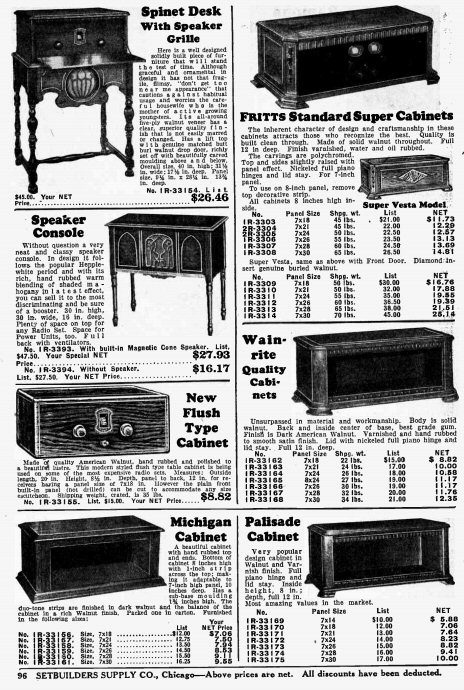 Complete innards:
Complete innards:
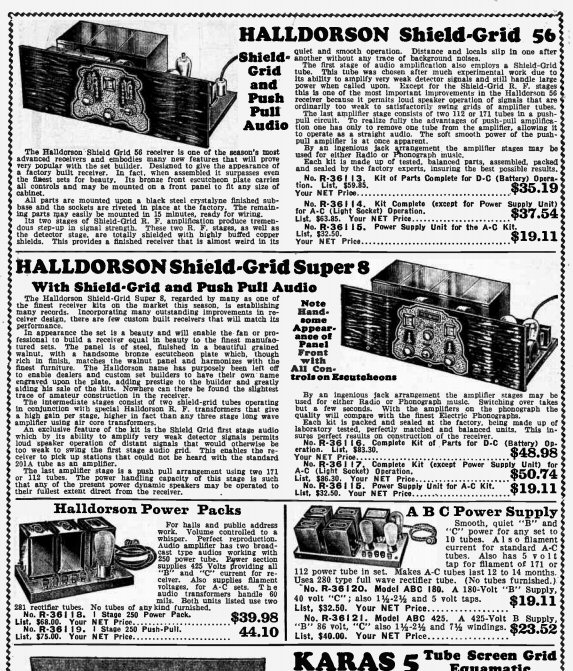 Fancy dials and bezels:
Fancy dials and bezels:
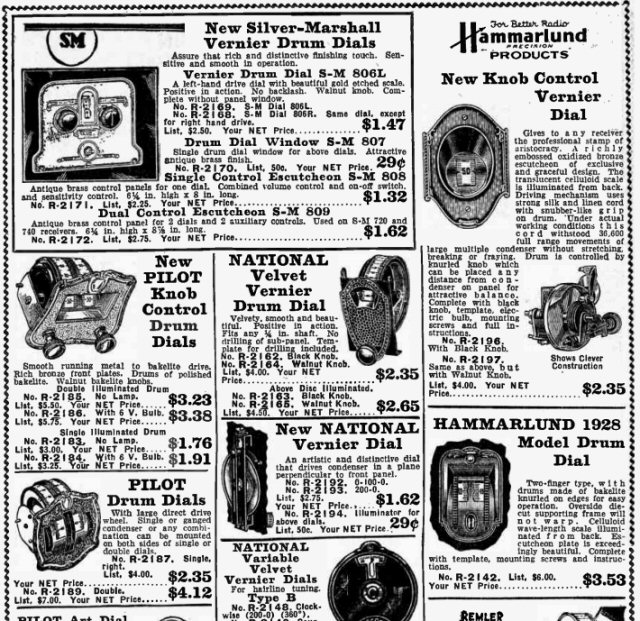 We no longer have ANY large-scale electronics factories in this fucked "country", but we still have a few small bespoke factories serving specialized niches like guitar amplifiers and ham radio. I bought a regen receiver kit from MFJ in Mississippi, and had a thoroughly pleasant experience dealing with the company. They responded quickly to questions about the instructions. I still use the little regen receiver daily for code practice.
= = = = =
What's not new at all? Service. Two to six hour fulfillment for telegraph or telephone orders. (Telegraph = online.)
We no longer have ANY large-scale electronics factories in this fucked "country", but we still have a few small bespoke factories serving specialized niches like guitar amplifiers and ham radio. I bought a regen receiver kit from MFJ in Mississippi, and had a thoroughly pleasant experience dealing with the company. They responded quickly to questions about the instructions. I still use the little regen receiver daily for code practice.
= = = = =
What's not new at all? Service. Two to six hour fulfillment for telegraph or telephone orders. (Telegraph = online.)
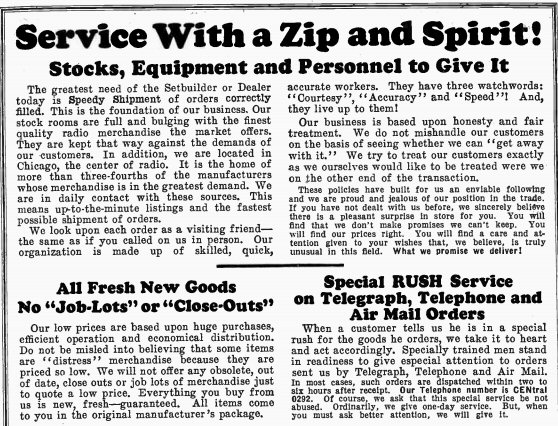 What's reinvented: Television. Several major stations were actively broadcasting in different TV systems in 1929, so there was a market for custom-built receivers. These systems went away in WW2, and TV didn't properly restart until 1952.
What's reinvented: Television. Several major stations were actively broadcasting in different TV systems in 1929, so there was a market for custom-built receivers. These systems went away in WW2, and TV didn't properly restart until 1952.
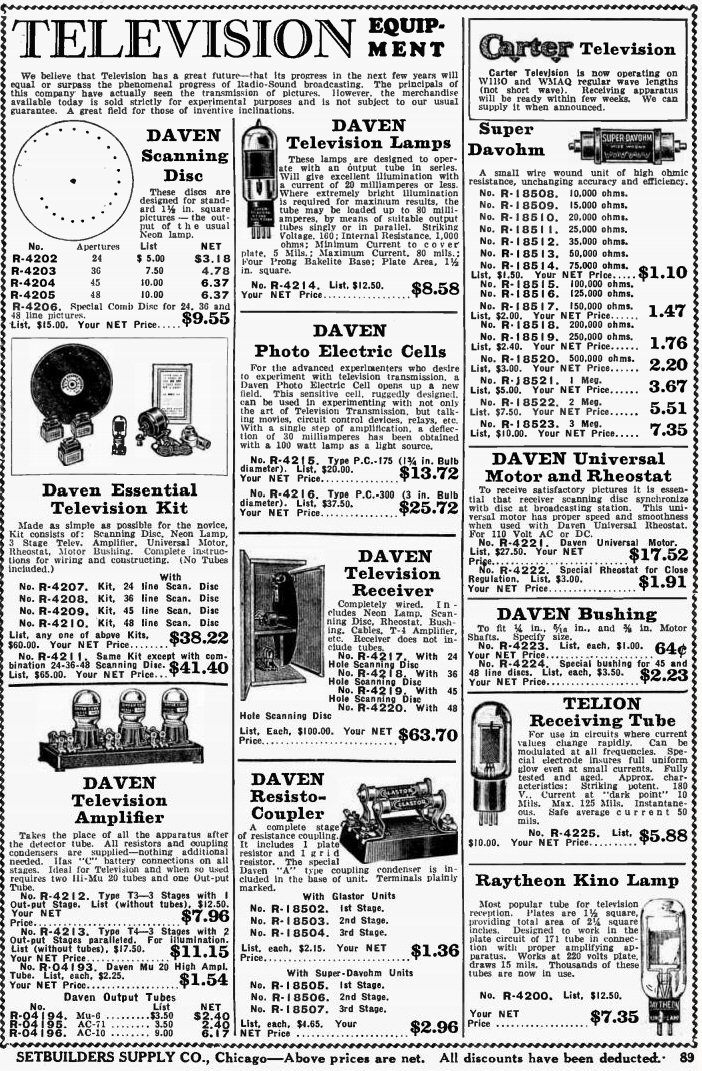 A different kind of reinvention, more puzzling. The company offered a wide variety of wallplates for workshops who wanted to install built-in radio systems in homes and apartments.
A different kind of reinvention, more puzzling. The company offered a wide variety of wallplates for workshops who wanted to install built-in radio systems in homes and apartments.
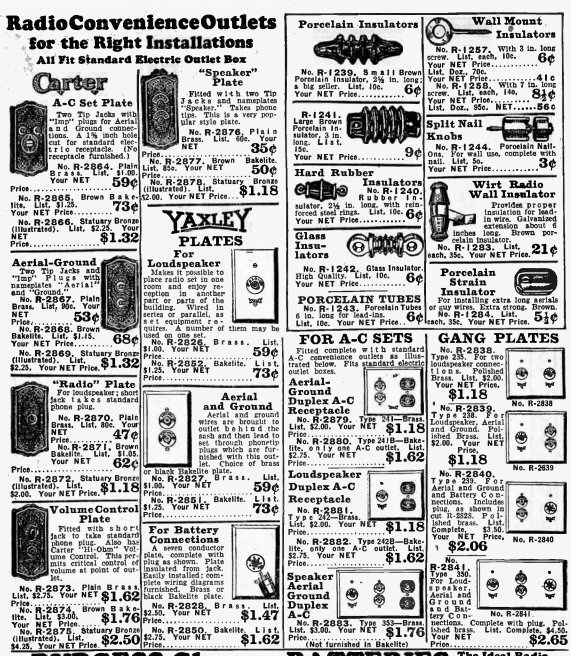 This never happened. Radios needed external antennas for about 10 years, but they never became part of the house. Wallplates came back suddenly and immediately for TV antennas. In 1952 when TV finally took off after FCC settled on one system, every house had an antenna, and every antenna had proper in-wall wiring leading to a wallplate.
This never happened. Radios needed external antennas for about 10 years, but they never became part of the house. Wallplates came back suddenly and immediately for TV antennas. In 1952 when TV finally took off after FCC settled on one system, every house had an antenna, and every antenna had proper in-wall wiring leading to a wallplate.
 Complete innards:
Complete innards:
 Fancy dials and bezels:
Fancy dials and bezels:
 We no longer have ANY large-scale electronics factories in this fucked "country", but we still have a few small bespoke factories serving specialized niches like guitar amplifiers and ham radio. I bought a regen receiver kit from MFJ in Mississippi, and had a thoroughly pleasant experience dealing with the company. They responded quickly to questions about the instructions. I still use the little regen receiver daily for code practice.
= = = = =
What's not new at all? Service. Two to six hour fulfillment for telegraph or telephone orders. (Telegraph = online.)
We no longer have ANY large-scale electronics factories in this fucked "country", but we still have a few small bespoke factories serving specialized niches like guitar amplifiers and ham radio. I bought a regen receiver kit from MFJ in Mississippi, and had a thoroughly pleasant experience dealing with the company. They responded quickly to questions about the instructions. I still use the little regen receiver daily for code practice.
= = = = =
What's not new at all? Service. Two to six hour fulfillment for telegraph or telephone orders. (Telegraph = online.)
 What's reinvented: Television. Several major stations were actively broadcasting in different TV systems in 1929, so there was a market for custom-built receivers. These systems went away in WW2, and TV didn't properly restart until 1952.
What's reinvented: Television. Several major stations were actively broadcasting in different TV systems in 1929, so there was a market for custom-built receivers. These systems went away in WW2, and TV didn't properly restart until 1952.
 A different kind of reinvention, more puzzling. The company offered a wide variety of wallplates for workshops who wanted to install built-in radio systems in homes and apartments.
A different kind of reinvention, more puzzling. The company offered a wide variety of wallplates for workshops who wanted to install built-in radio systems in homes and apartments.
 This never happened. Radios needed external antennas for about 10 years, but they never became part of the house. Wallplates came back suddenly and immediately for TV antennas. In 1952 when TV finally took off after FCC settled on one system, every house had an antenna, and every antenna had proper in-wall wiring leading to a wallplate.
This never happened. Radios needed external antennas for about 10 years, but they never became part of the house. Wallplates came back suddenly and immediately for TV antennas. In 1952 when TV finally took off after FCC settled on one system, every house had an antenna, and every antenna had proper in-wall wiring leading to a wallplate. Labels: Entertainment, skill-estate
